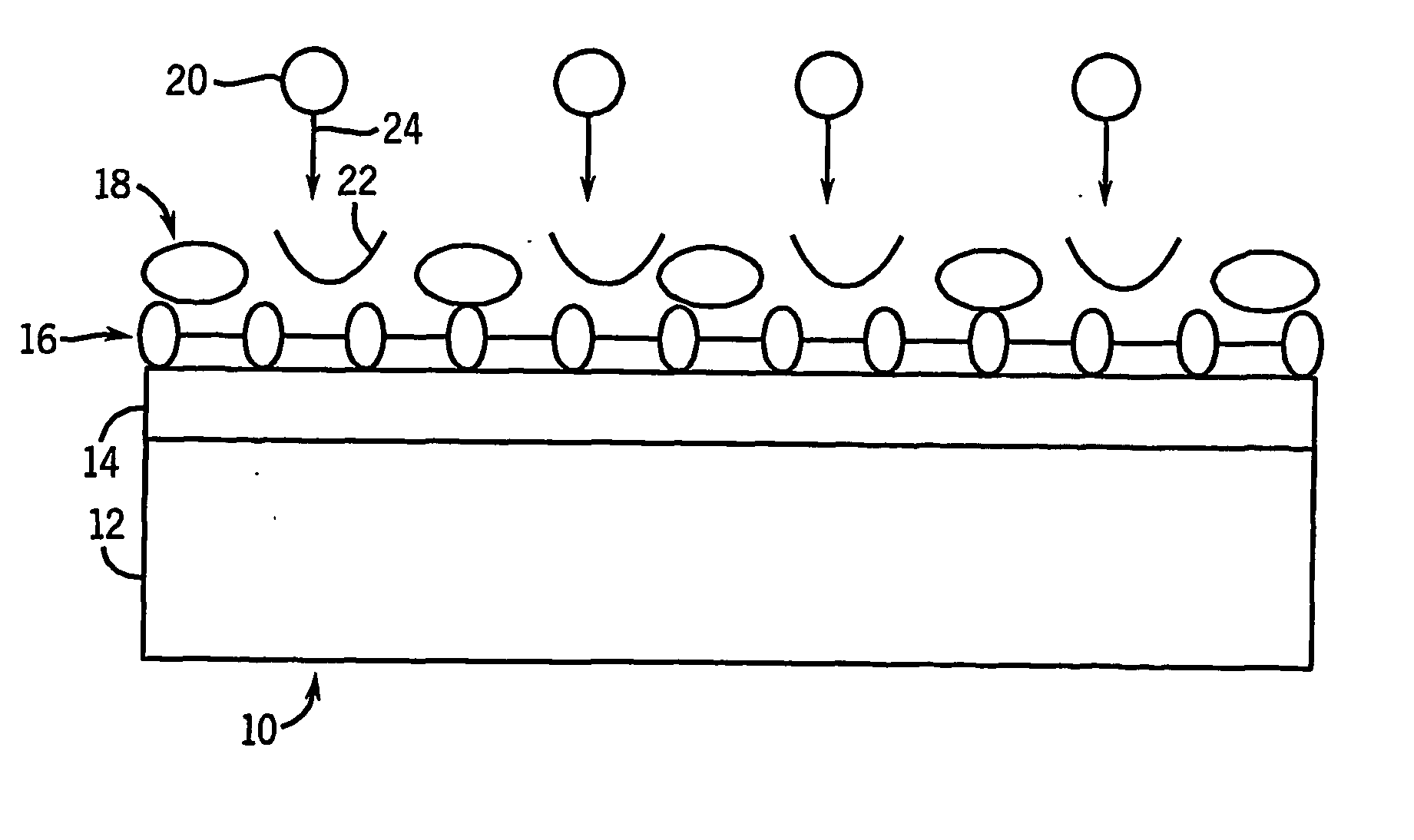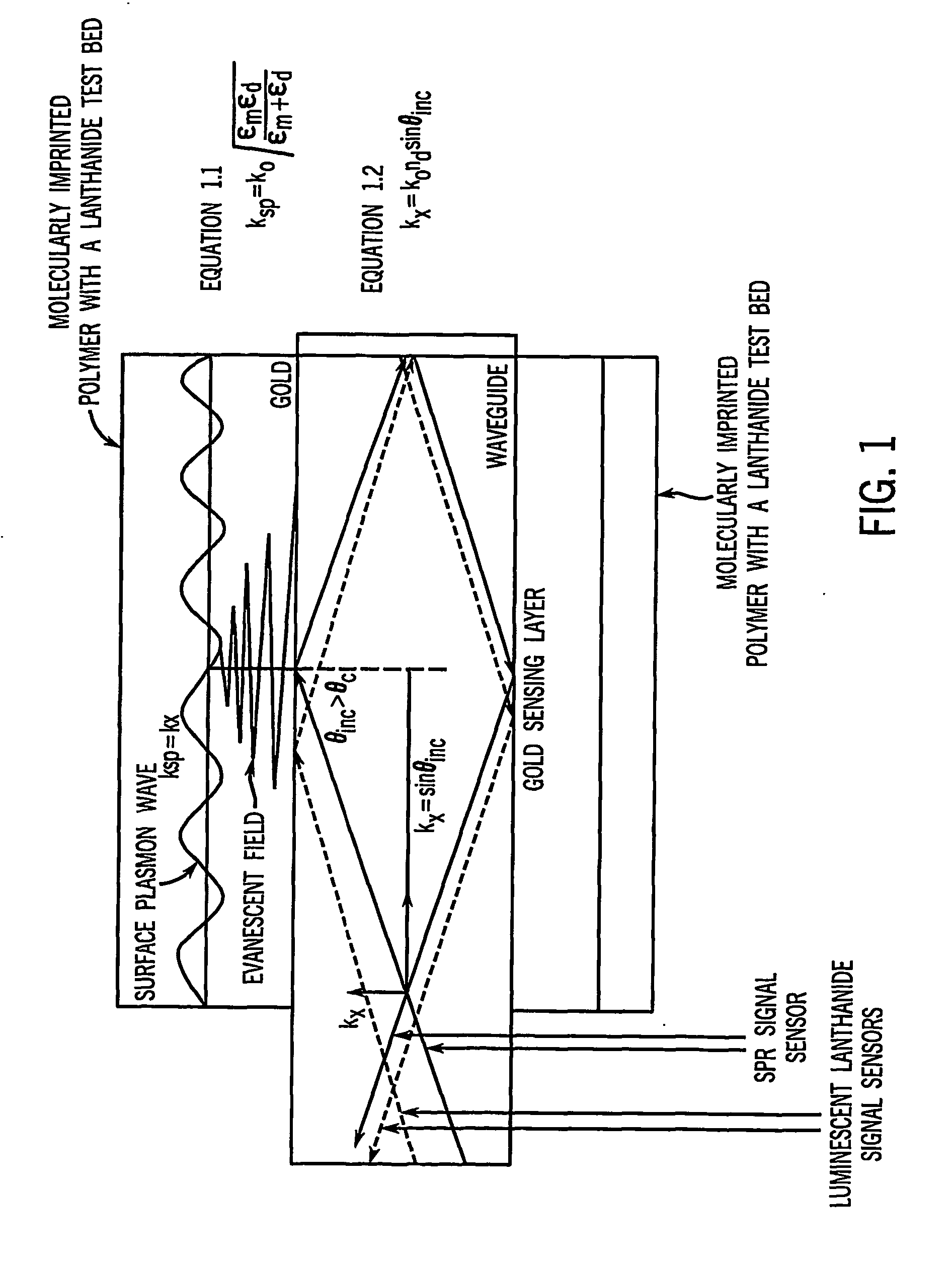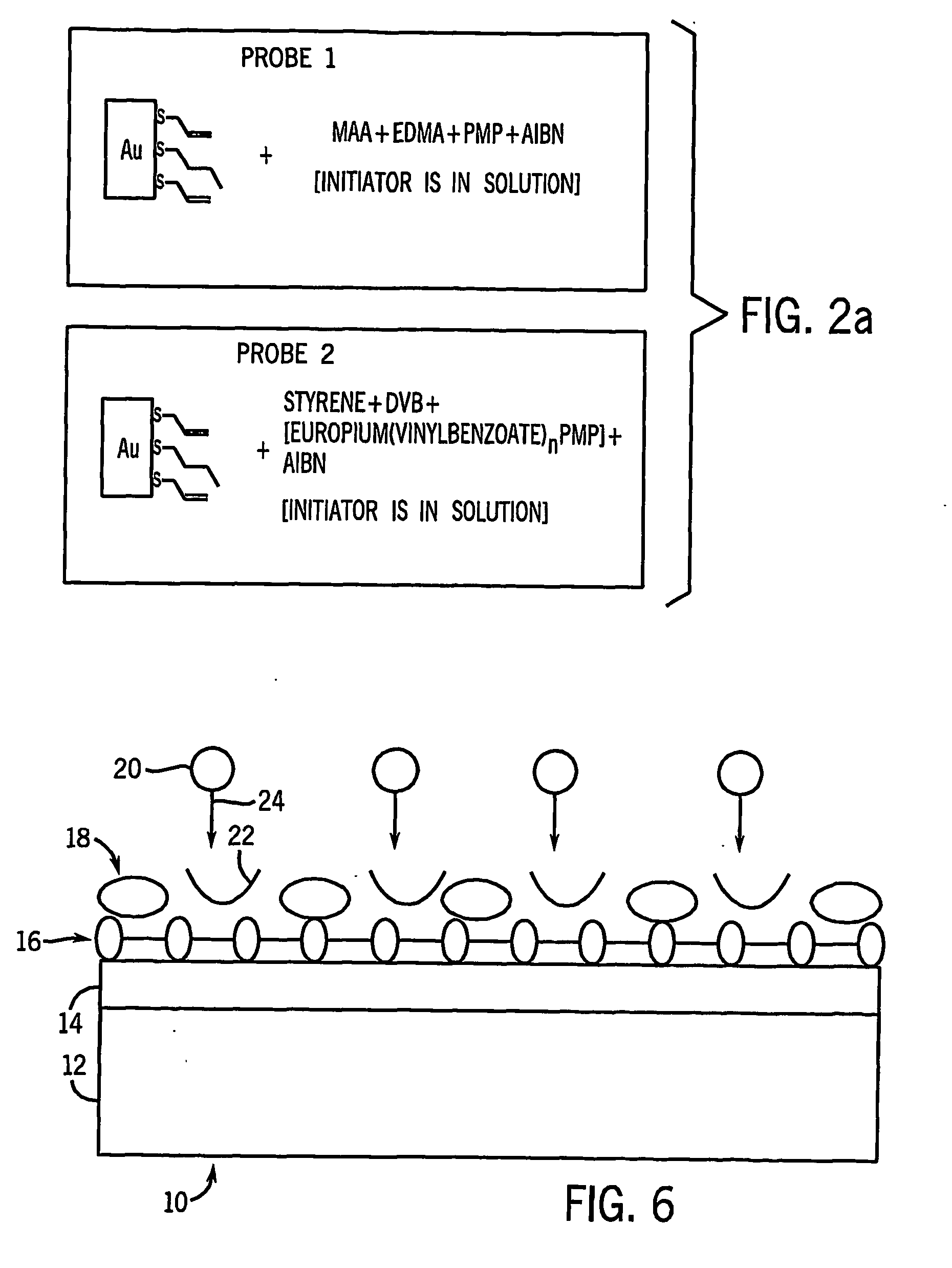Chemical sensors featuring dual-sensing motifs
a sensor and spr technology, applied in the field of optical sensors, can solve the problems of not being reusable, not responding to all organophosphates, and being unable to achieve specificity, etc., to achieve the effect of increasing confirming and/or optimizing the performance of the spr sensor off-line or on-line, and improving the sensitivity and selectivity of the sensor
- Summary
- Abstract
- Description
- Claims
- Application Information
AI Technical Summary
Benefits of technology
Problems solved by technology
Method used
Image
Examples
example
[0035] The growth and the testing of molecularly imprinted polymers on the surface of a fiber-optic based SPR sensor tailored for the detection of nerve agent PMP [CH3POOHOCHCH3C(CH3)3] in solution is accomplished as follows.
1.1 Background
[0036] The evanescent wave from the light in total internal reflection through the fiber optic can excite a standing charge on the metal film (in this case gold) surface of the SPR sensor. The localized fluctuations of electron density on the surface of the metal are known as surface plasmon. The surface plasmon (SP) wave is modulated from the dielectric constant of the thin gold film and the dielectric constant of the molecules adsorbed on the surface and within 100 nm of the surface as shown in the FIG. 1. The light at a fixed wavelength and fixed angle will enter in resonance with the surface plasmon and the photon will be absorbed. This will be seen by a minimum in the reflection spectra. The position of the minima is indicative of the refra...
PUM
 Login to View More
Login to View More Abstract
Description
Claims
Application Information
 Login to View More
Login to View More - R&D
- Intellectual Property
- Life Sciences
- Materials
- Tech Scout
- Unparalleled Data Quality
- Higher Quality Content
- 60% Fewer Hallucinations
Browse by: Latest US Patents, China's latest patents, Technical Efficacy Thesaurus, Application Domain, Technology Topic, Popular Technical Reports.
© 2025 PatSnap. All rights reserved.Legal|Privacy policy|Modern Slavery Act Transparency Statement|Sitemap|About US| Contact US: help@patsnap.com



